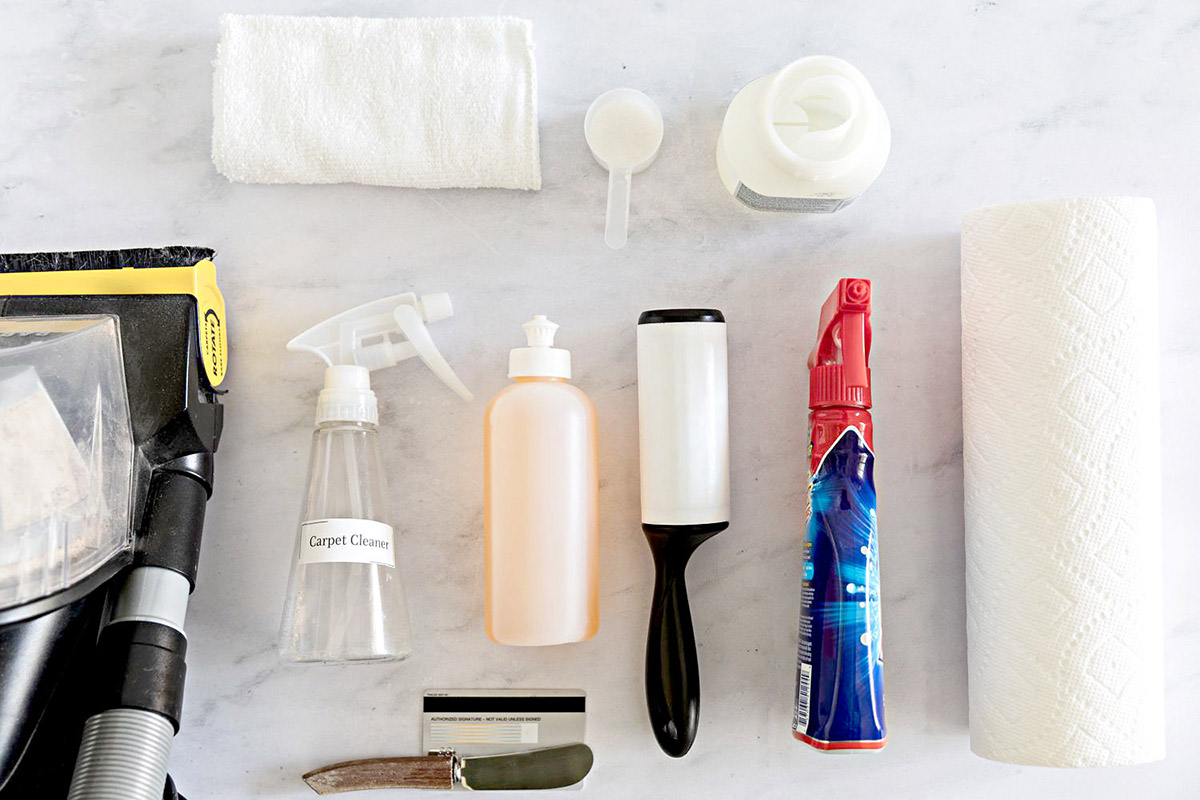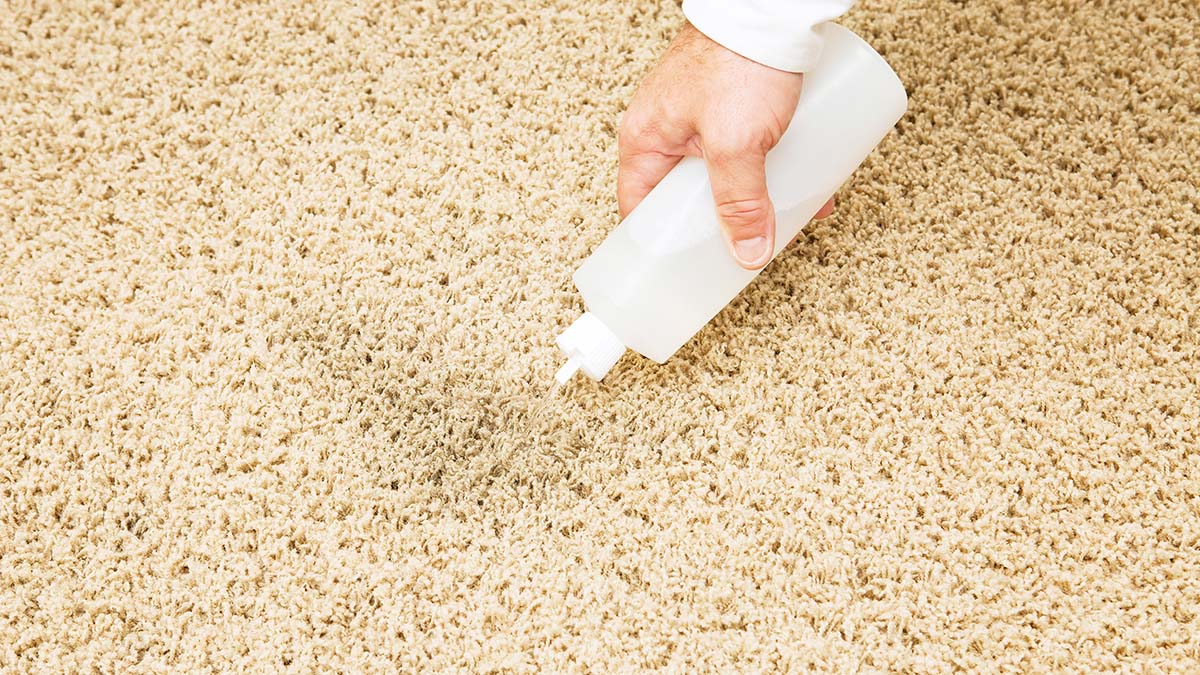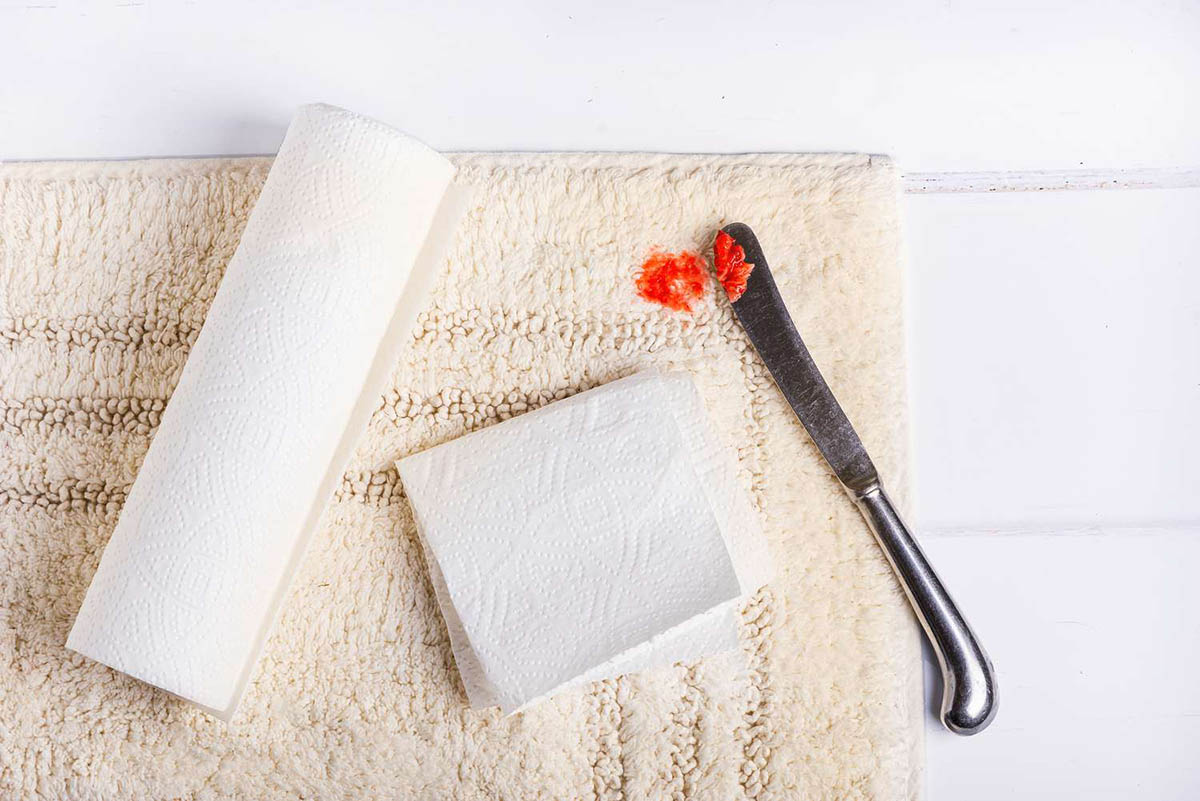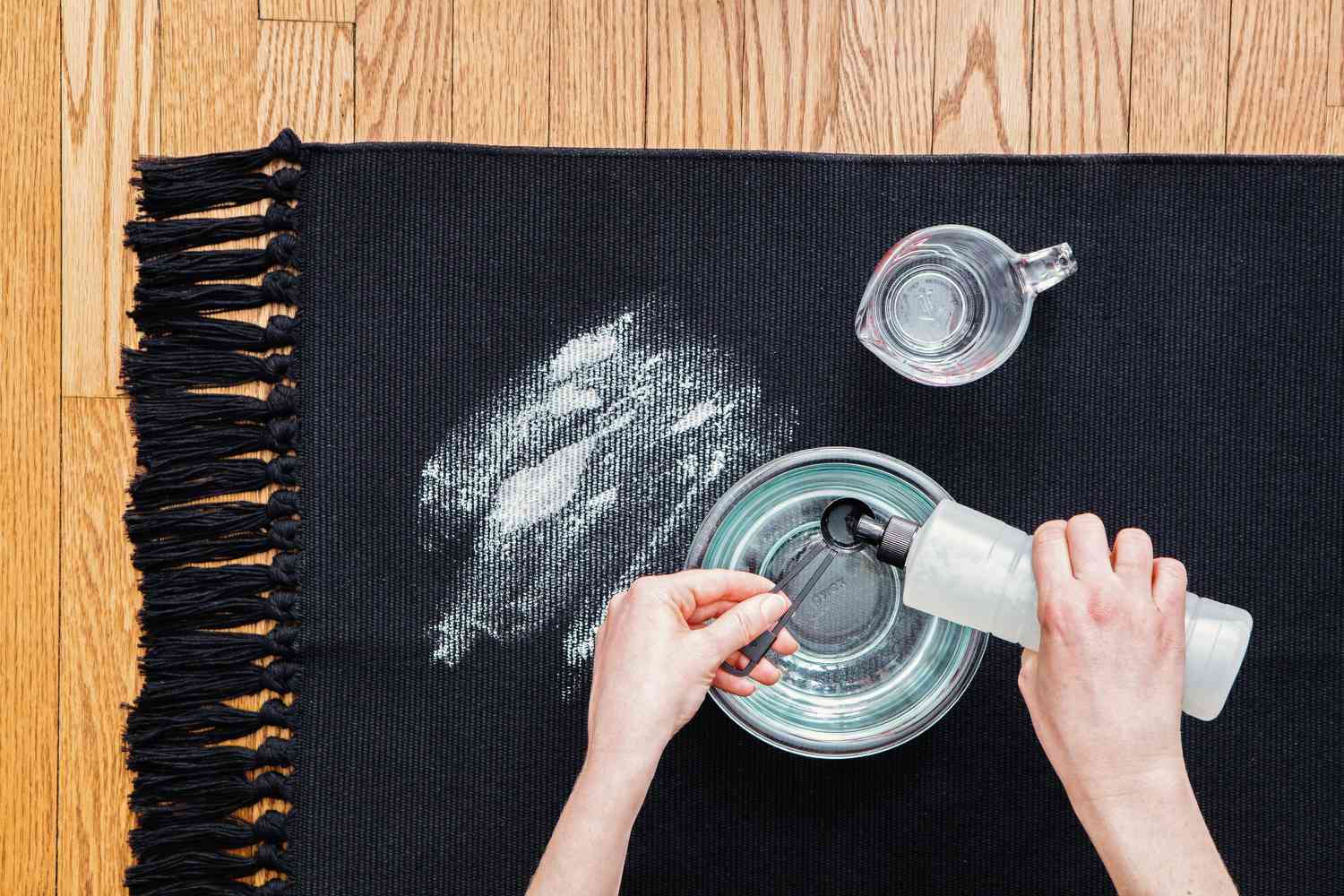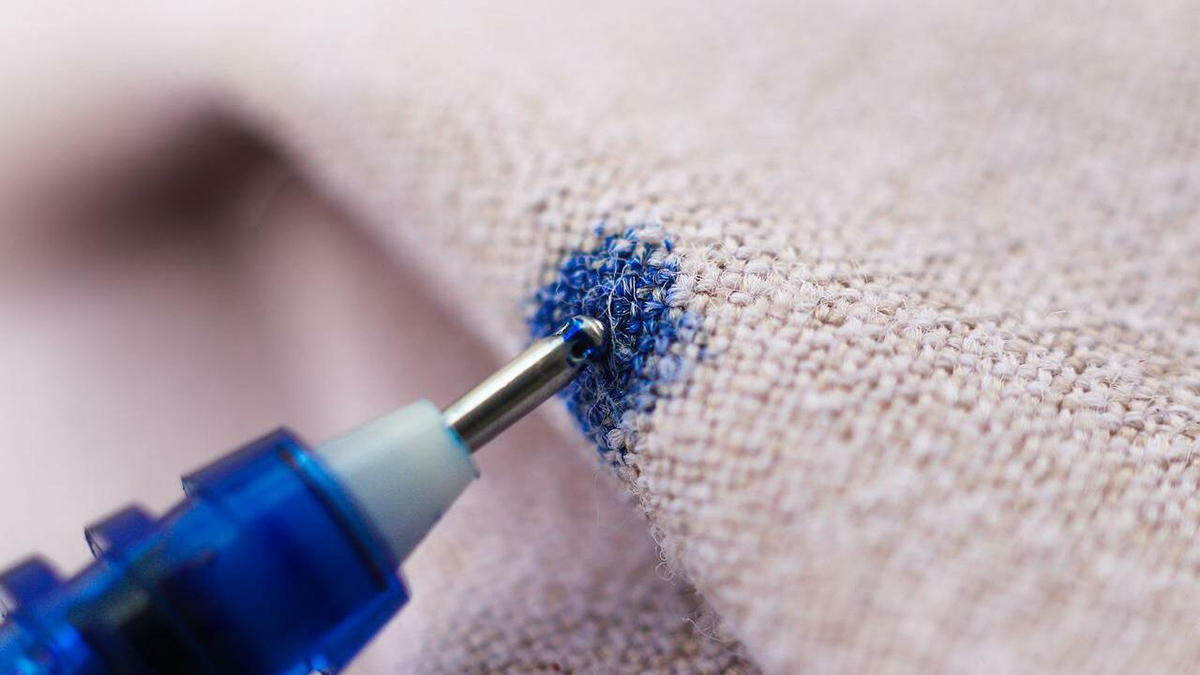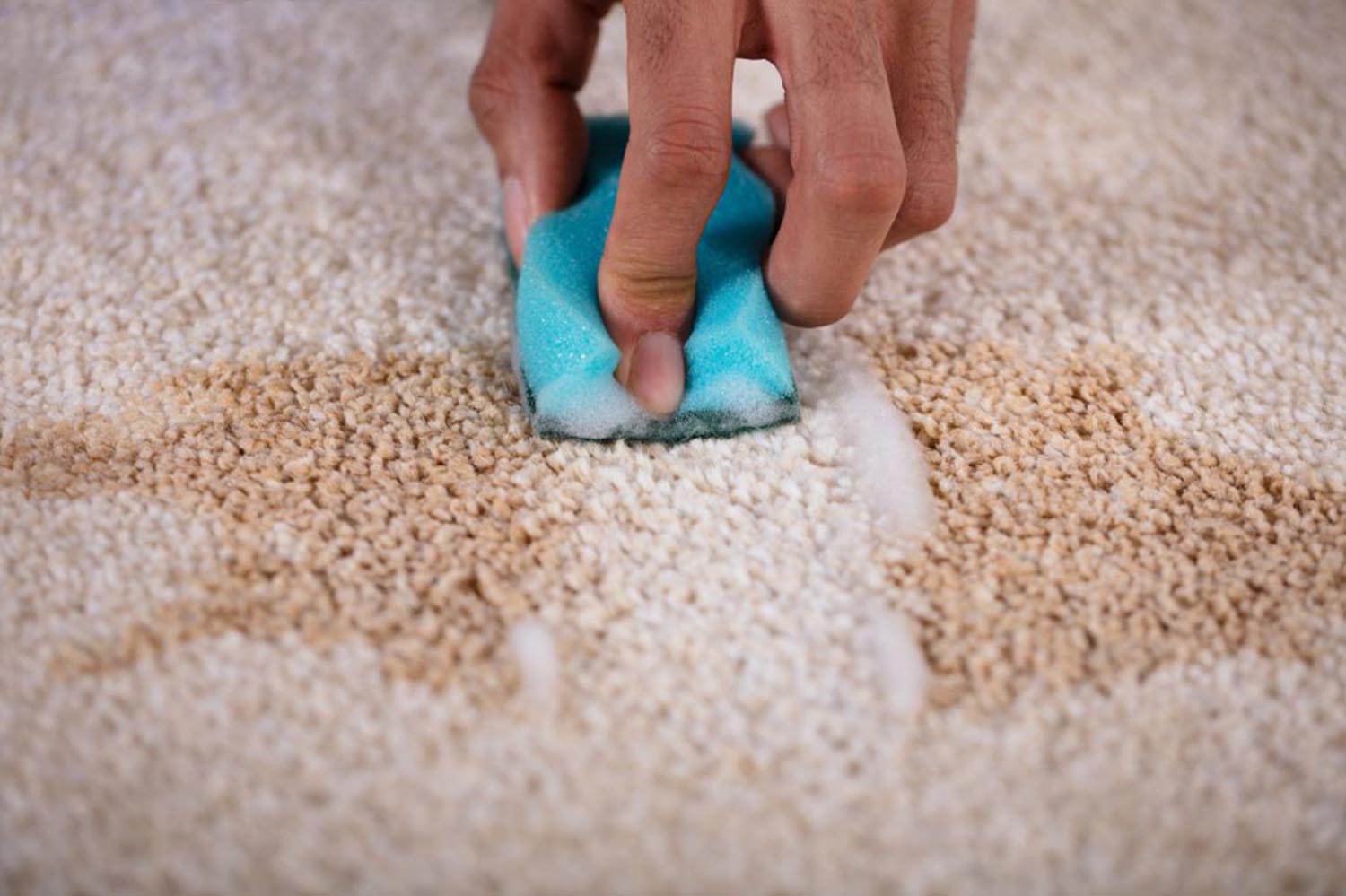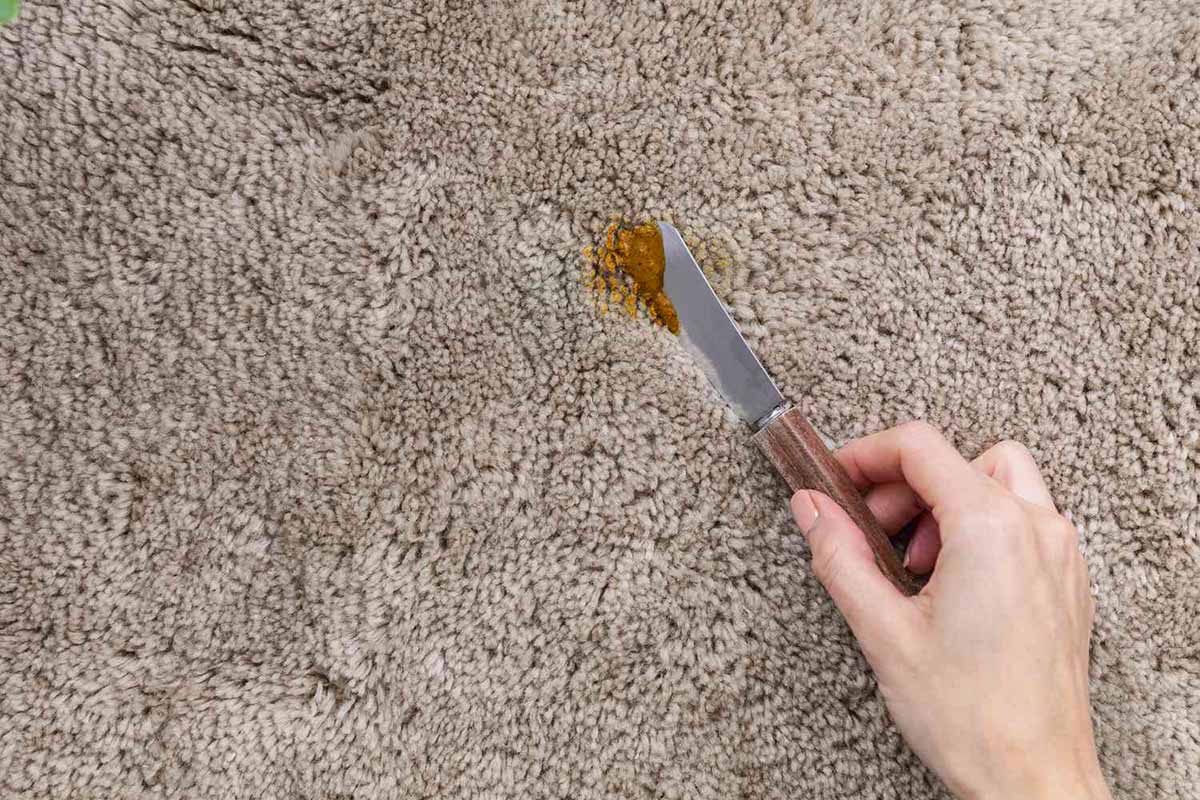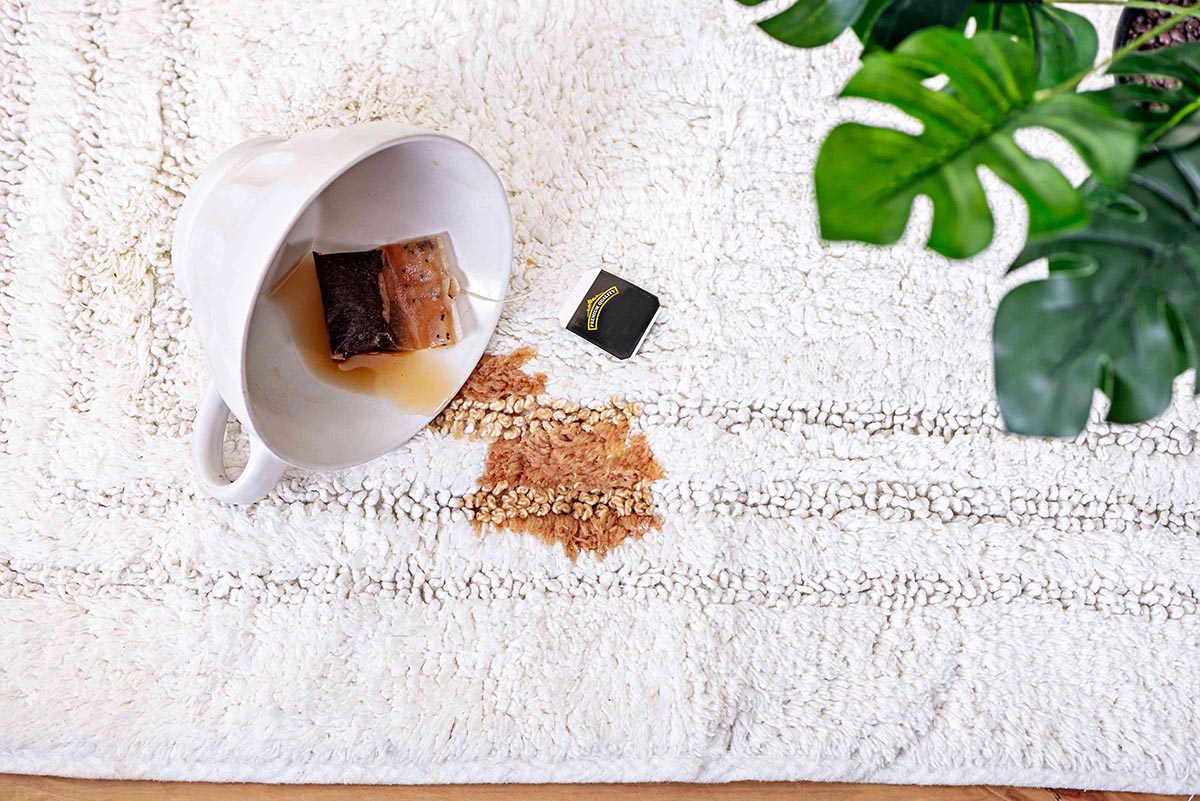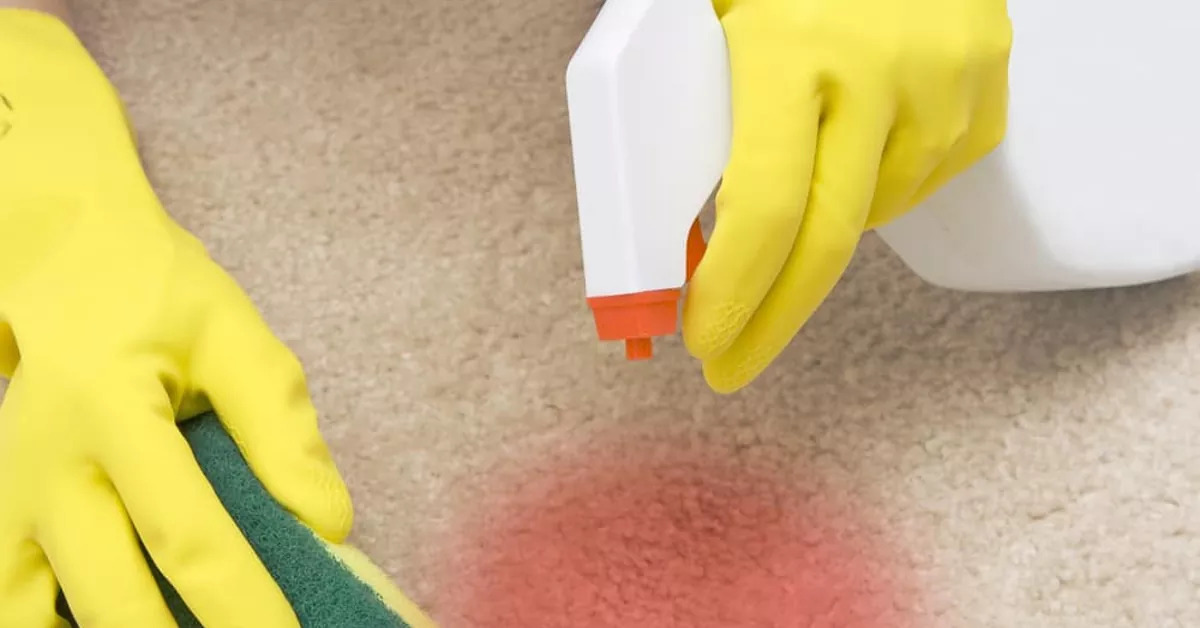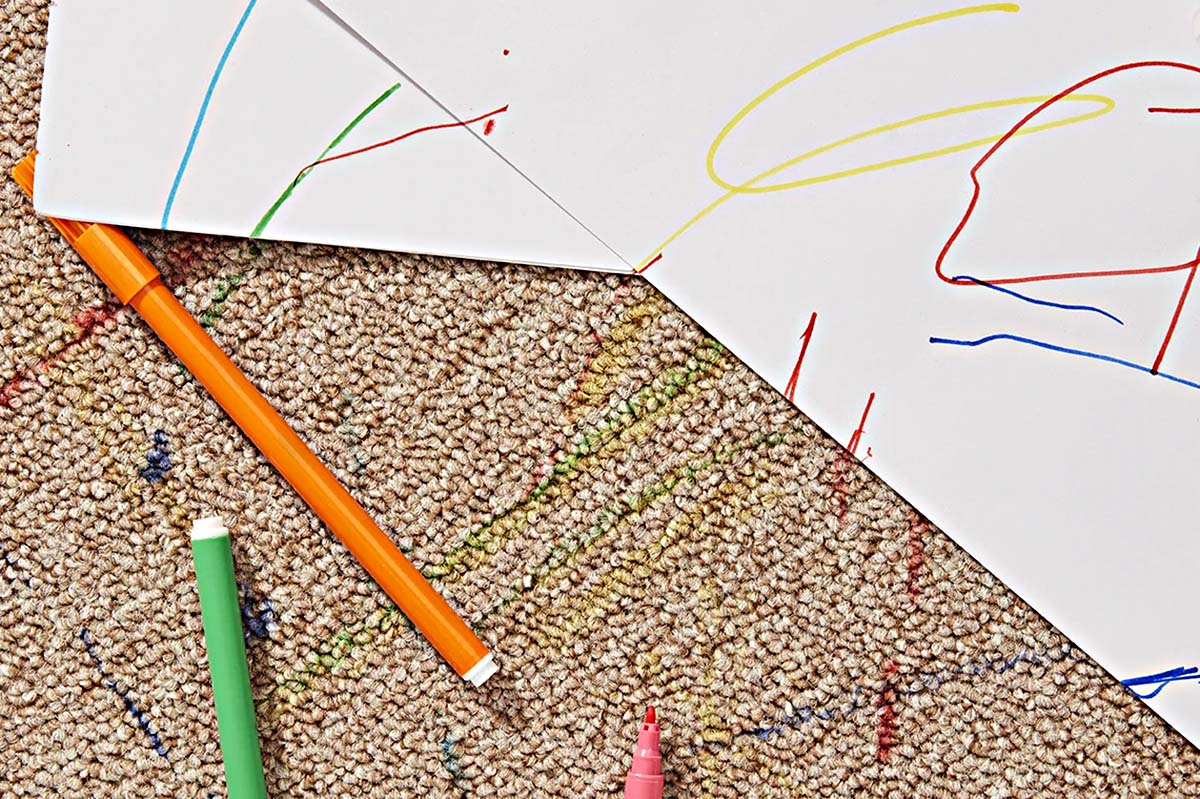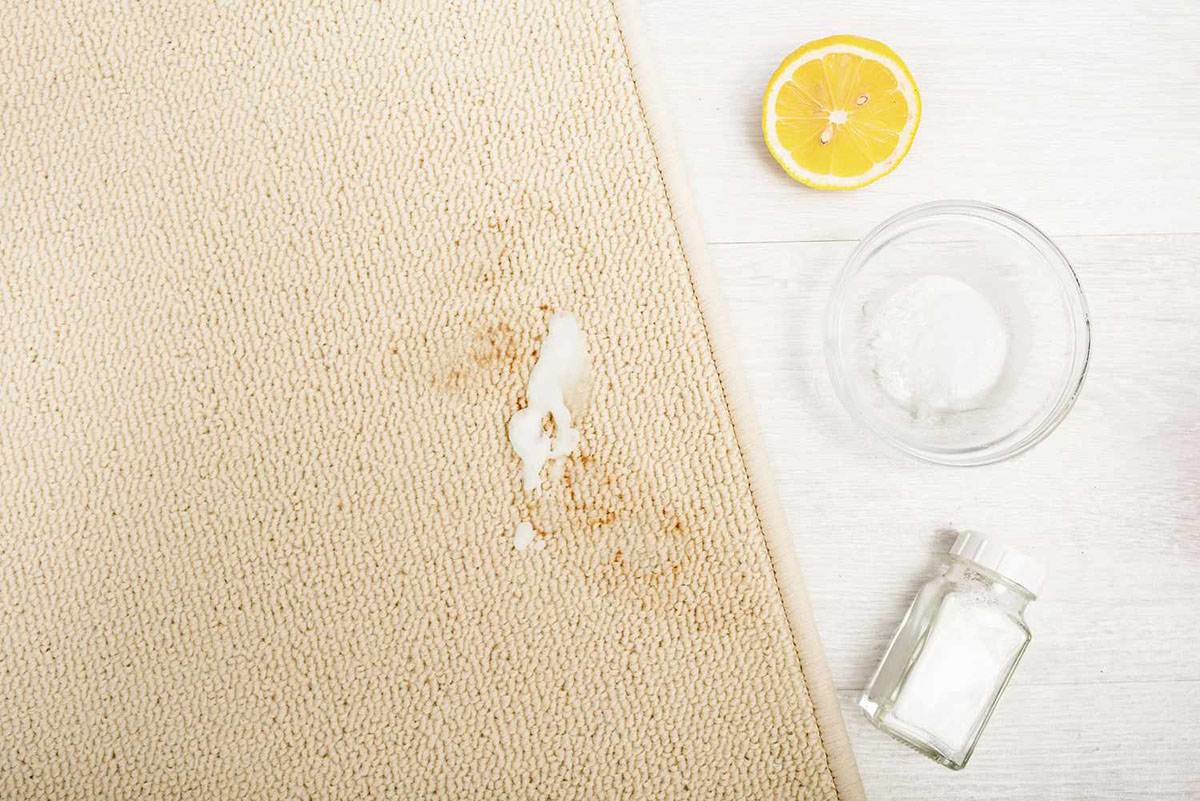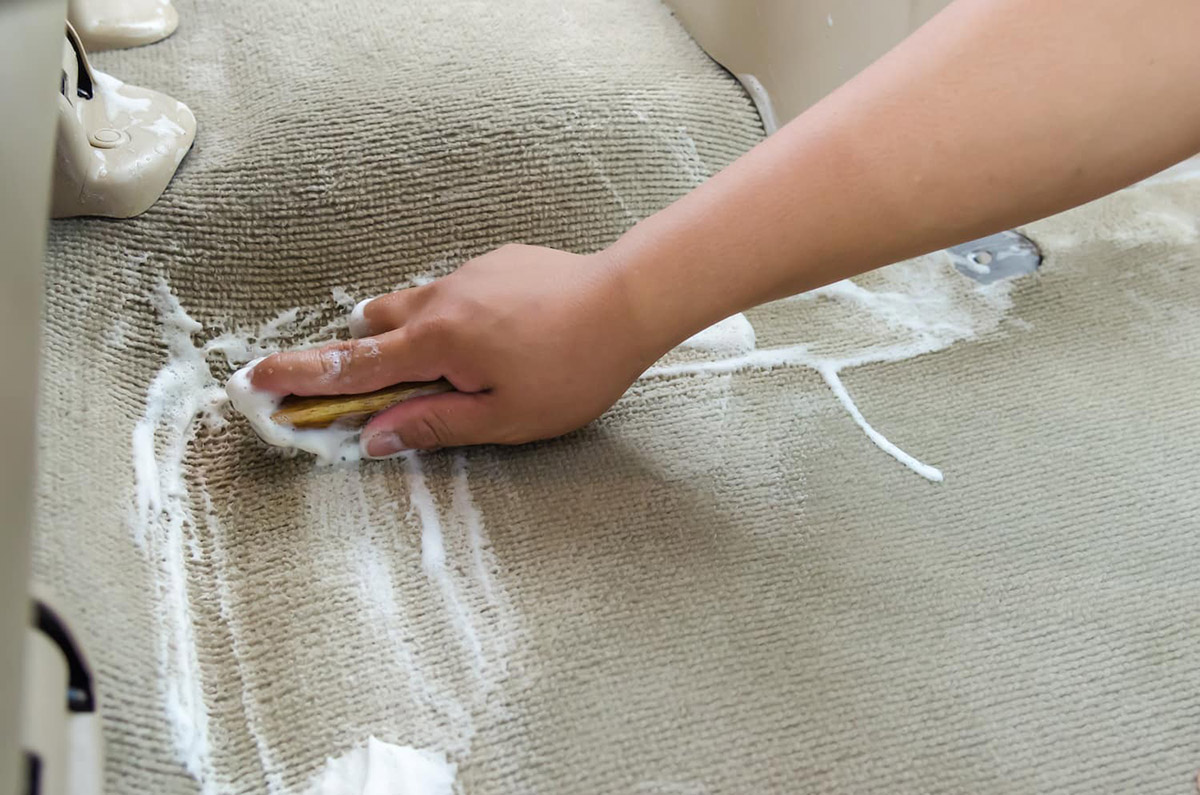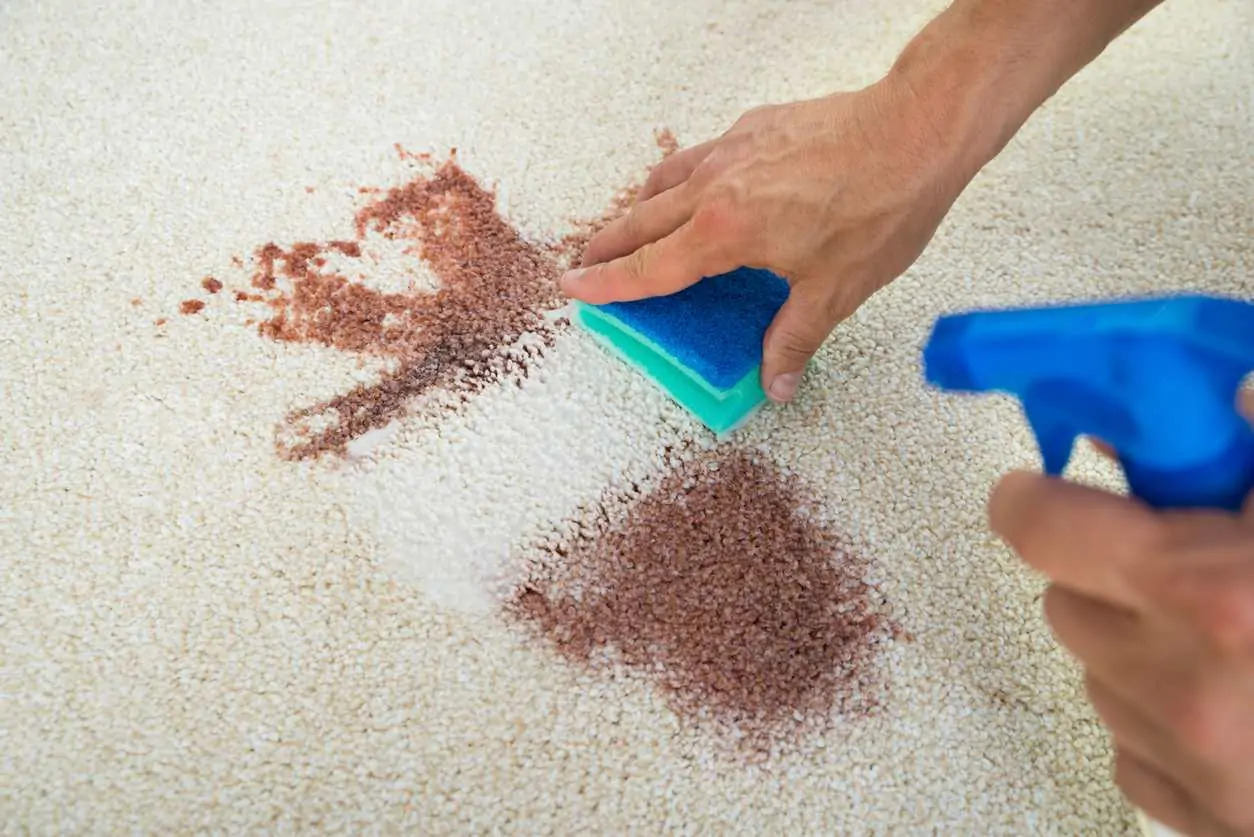Home>Articles>How To Remove Chocolate Milk Stains From The Carpet
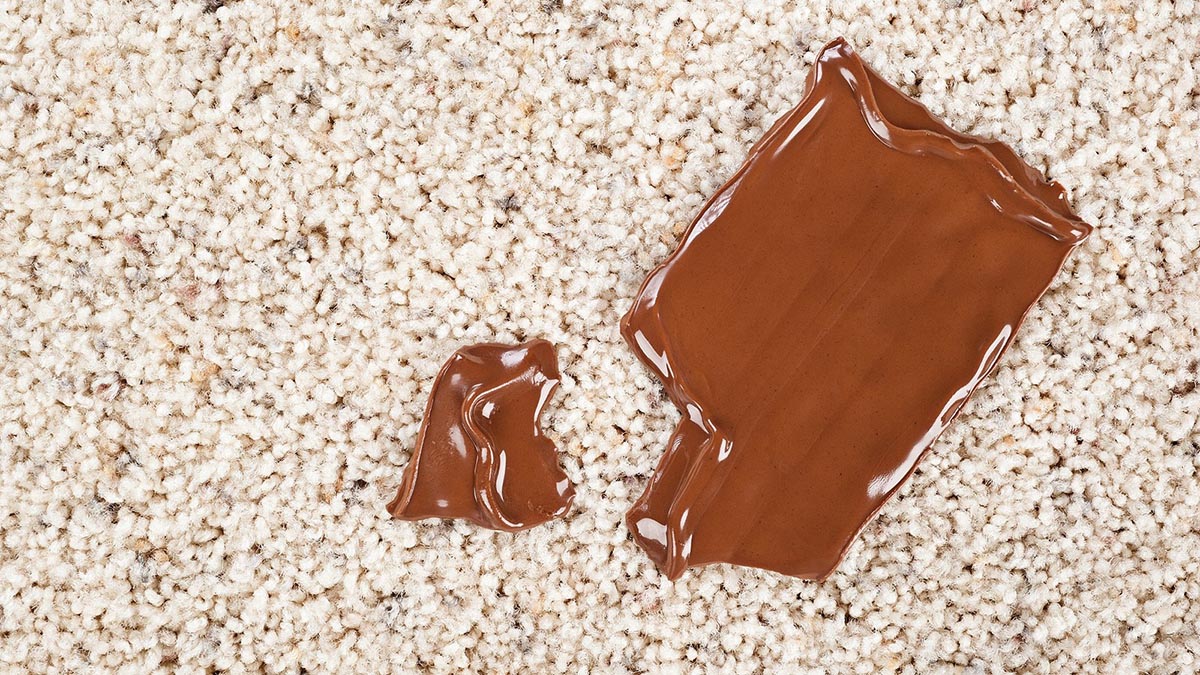

Articles
How To Remove Chocolate Milk Stains From The Carpet
Modified: December 7, 2023
Looking for articles on how to remove chocolate milk stains from your carpet? Check out our guide for effective and easy carpet stain removal methods.
(Many of the links in this article redirect to a specific reviewed product. Your purchase of these products through affiliate links helps to generate commission for Storables.com, at no extra cost. Learn more)
Introduction
Removing chocolate milk stains from the carpet can be a daunting task. Whether it’s a spilled glass or an accidental splash, chocolate milk has a tendency to leave behind stubborn marks on your carpet fibers. But fear not! With the right materials and techniques, you can effectively remove those unsightly stains and restore the pristine look of your carpet.
Chocolate milk contains various ingredients that can contribute to the difficulty of stain removal. The combination of milk, cocoa, sugar, and other additives can create a sticky, dark stain that clings to the carpet fibers. If not treated promptly and correctly, these stains can become even more challenging to remove over time.
In this article, we will guide you through a step-by-step process to effectively remove chocolate milk stains from your carpet. We will discuss the materials you will need, as well as the techniques and precautions necessary to ensure successful stain removal without damaging your carpet. So let’s get started on restoring the beauty of your carpet!
Key Takeaways:
- Act quickly and use gentle blotting to remove chocolate milk stains from carpets. Follow the step-by-step process and additional tips for effective stain removal without damaging the carpet fibers.
- Gather the necessary materials and be patient during the stain removal process. Rinse and dry the carpet thoroughly to prevent mold growth and maintain its pristine appearance.
Read more: How To Remove Chocolate Stains From Carpet
Materials Needed
Before you begin the process of removing chocolate milk stains from your carpet, it’s important to gather the necessary materials. Having these items on hand will help you tackle the stain quickly and effectively. Here is a list of materials you will need:
- White absorbent towels or paper towels: These will be used to blot and absorb as much of the chocolate milk stain as possible before cleaning.
- Mild liquid dish soap: Look for a gentle dish soap that does not contain harsh chemicals or dyes. It will help break down the stain without damaging the carpet fibers.
- Warm water: You will need warm water to create a cleaning solution and rinse the carpet.
- Clean, empty spray bottle: This will be used to mix the cleaning solution and apply it to the stain.
- Soft-bristled brush or sponge: Choose a brush or sponge with soft bristles to gently scrub the stain without causing any damage to the carpet.
- Vacuum cleaner: A vacuum cleaner will be used to remove any residue or dry particles after the stain removal process.
Make sure you have all of these materials available before you begin the stain removal process. This will save you time and allow you to tackle the stain promptly, increasing your chances of successful removal.
Step 1: Blot the Stain
As soon as you notice a chocolate milk stain on your carpet, it’s crucial to act quickly to prevent it from setting deep into the fibers. The first step is to blot the stain using white absorbent towels or paper towels. Here’s how to do it:
- Start by removing any excess chocolate milk from the carpet. Use a spoon or a blunt knife to gently scoop up any solid or semi-solid chocolate.
- Next, take a white absorbent towel or a few pieces of paper towel and gently blot the stain. Avoid rubbing or scrubbing the stain as it can push the chocolate milk deeper into the carpet fibers.
- Continue blotting the stain until you’ve absorbed as much of the liquid as possible. If the towel becomes saturated, switch to a clean one to avoid spreading the stain further.
- Keep blotting until there’s no more chocolate milk transferring onto the towel. This step is crucial as it helps remove the surface layer of the stain, making the subsequent cleaning process more effective.
Remember, the key is to blot the stain gently rather than scrubbing or rubbing it vigorously. By dabbing the stain, you’re lifting the chocolate milk off the carpet fibers without spreading it around or pushing it deeper. This will prevent further staining and minimize the risk of damaging the carpet in the process.
Once you’ve completed this step, you’re ready to move on to the next step and prepare a cleaning solution to tackle the remaining stain.
Step 2: Prepare a Cleaning Solution
After blotting the chocolate milk stain, it’s time to prepare a cleaning solution to tackle the remaining residue. For this step, you will need a mild liquid dish soap and warm water. Follow these instructions to create the cleaning solution:
- Fill a clean, empty spray bottle with warm water. Make sure the water is not too hot, as it can damage the carpet fibers.
- Add a few drops of mild liquid dish soap to the spray bottle. Be careful not to add too much soap, as it may leave behind a soapy residue that is difficult to rinse out.
- Close the spray bottle and gently shake it to mix the water and soap together. Ensure that the solution is well combined.
By using a mixture of warm water and mild liquid dish soap, you create a gentle cleaning solution that is effective in breaking down the remaining chocolate milk stain. The dish soap helps to dissolve the fats and oils in the stain, making it easier to remove during the cleaning process.
Once you have prepared the cleaning solution, you’re ready to move on to the next step and apply it to the chocolate milk stain on your carpet.
Step 3: Apply the Cleaning Solution
With the cleaning solution prepared, it’s time to apply it to the chocolate milk stain on your carpet. Here’s how to do it:
- Before applying the cleaning solution, do a spot test on a small, inconspicuous area of your carpet to ensure that it doesn’t cause any discoloration or damage. Wait for a few minutes and if there are no adverse effects, you can proceed with confidence.
- Spray the cleaning solution directly onto the chocolate milk stain. Make sure to apply enough solution to fully saturate the stained area without oversaturating the carpet.
- Allow the cleaning solution to sit on the stain for about 5-10 minutes. This will give it time to penetrate and break down the remaining chocolate milk residue.
- After the designated time, take a soft-bristled brush or a sponge and gently scrub the stained area in a circular motion. Be gentle to avoid damaging the carpet fibers.
- Continue scrubbing until the stain starts to lift and fade. Avoid applying excessive force as it may push the stain deeper or cause the carpet to fray.
By applying the cleaning solution and scrubbing the stain, you’re effectively loosening the chocolate milk residue from the carpet fibers. The combination of the cleaning solution and gentle agitation helps to break down and remove the remaining stain particles.
Once you’ve scrubbed the stained area, you’re ready to move on to the next step and continue the stain removal process.
Blot the chocolate milk stain with a clean cloth to remove excess liquid. Mix 1 tablespoon of dish soap with 2 cups of warm water and blot the stain with the solution. Then, blot with a clean cloth and repeat until the stain is gone.
Step 4: Blot and Repeat
After scrubbing the stained area, it’s time to blot the carpet to remove the loosened chocolate milk residue. This step will help lift the stain and prevent it from spreading or reabsorbing into the carpet fibers. Follow these instructions to complete this step:
- Take a clean, white absorbent towel or a few pieces of paper towel and gently blot the treated area. Press down firmly to absorb as much moisture as possible.
- Continue blotting and rotating to a clean section of the towel until no more chocolate milk residue transfers onto the towel.
- If the stain is still visible after blotting, repeat steps 3 and 4, applying more cleaning solution and gently scrubbing the area. This may be necessary for persistent or deeper stains.
- After each round of blotting and repeating the cleaning process, make sure to check the progress of the stain. If it has significantly lightened or disappeared, you can proceed to the next step. If not, continue to repeat the process until the stain is completely removed.
It’s important to be patient during this step, as stubborn stains may require multiple rounds of blotting and repeating the cleaning process. By consistently blotting and repeating the steps, you’re actively working to lift and remove the chocolate milk residue from the carpet fibers.
Once you’re satisfied with the progress, you can move on to the next step and rinse the treated area to remove any remaining residue.
Step 5: Rinse the Area
After successfully removing the chocolate milk stain from the carpet, it’s essential to rinse the treated area to ensure the removal of any remaining residue and cleaning solution. Follow these steps to effectively rinse the area:
- Fill a clean spray bottle with warm water.
- Spray the area thoroughly with water to rinse away any leftover cleaning solution.
- Use a clean, white absorbent towel or paper towel to blot the area and absorb the excess water. Repeat this process as necessary until the carpet feels slightly damp rather than wet.
- Allow the carpet to air dry completely. It’s crucial to avoid walking on the damp area while it’s drying to prevent reintroducing dirt or causing new stains.
Rinsing the treated area removes any lingering residue and helps ensure that no soap or cleaning solution is left behind on the carpet fibers. By thoroughly rinsing and blotting the area, you’re promoting a clean and residue-free finish.
Once the carpet has dried completely, you can move on to the final step of this process, which involves ensuring the carpet is completely dry and offering some additional tips and precautions to keep in mind.
Step 6: Dry the Carpet
Properly drying the carpet is an important final step to ensure that no moisture remains, preventing mold growth and maintaining the integrity of the carpet fibers. Follow these steps to effectively dry the carpet after removing the chocolate milk stain:
- Open windows or turn on fans to promote air circulation in the room. This will help speed up the drying process.
- Avoid walking on the damp area while it’s drying to prevent transferring dirt or causing new stains. If necessary, place a “wet floor” sign or barrier to notify others to avoid the area.
- If you have a dehumidifier, turn it on to help remove moisture from the air.
- Leave the carpet to air dry naturally. Depending on the climate and humidity levels, this may take a few hours to a full day. Patience is key during this step.
- Once the carpet is completely dry, inspect the treated area to ensure that the stain is fully removed. If any remnants are still visible, you may need to repeat the stain removal process or consider seeking professional carpet cleaning services.
By allowing the carpet to dry thoroughly, you significantly reduce the risk of mold growth and ensure that the stain removal process is complete. Properly drying the carpet safeguards against potential damage and maintains the overall quality of your flooring.
Congratulations! You have successfully removed the chocolate milk stain from your carpet and restored its original appearance. By following these steps and using the recommended materials, you can effectively tackle challenging stains like chocolate milk and keep your carpet looking clean and fresh.
Now that you have a stain-free carpet, it’s important to be mindful of potential spills and accidents. Promptly attend to any future stains to increase the chances of successful removal. Remember to always test any cleaning solution on a small, inconspicuous area before using it on the entire stain and consult a professional cleaner if needed.
Additional Tips and Precautions
While the step-by-step process outlined above is effective in removing chocolate milk stains from carpets, here are some additional tips and precautions to keep in mind for optimal stain removal and carpet care:
- Act quickly: The faster you address a chocolate milk stain, the easier it will be to remove. Promptly blot the stain and initiate the cleaning process as soon as possible.
- Use white towels and paper towels: White absorbent towels or paper towels are recommended to avoid any potential color transfer to the carpet fibers during the blotting process.
- Avoid rubbing or scrubbing aggressively: Vigorous rubbing or scrubbing can damage the carpet fibers and spread the stain. Always use gentle motions when blotting and scrubbing.
- Test cleaning solutions in an inconspicuous area: Before applying any cleaning solution to the stain, test it in a small, hidden area of the carpet to ensure it doesn’t cause any color fading or damage.
- Follow manufacturer’s instructions: If your carpet has specific care instructions, such as avoiding certain cleaning agents or methods, be sure to follow those guidelines to prevent any damage to your carpet.
- Avoid using heat for drying: While it may be tempting to use a hairdryer or other heat sources to speed up the drying process, excessive heat can cause carpet fibers to shrink or become damaged. Stick to natural air drying methods.
- Consider professional cleaning: If the stain persists or if you’re dealing with a large area of carpet, it may be best to seek professional carpet cleaning services to ensure thorough and effective stain removal.
Following these additional tips and precautions will help you achieve better results and maintain the longevity of your carpet. Remember to always approach stain removal with care and patience to avoid causing further damage to your carpet.
By being proactive and employing the proper techniques and materials, you can successfully remove and prevent chocolate milk stains from ruining the appearance of your carpet. With a little effort and the right approach, your carpet can stay clean and beautiful for years to come.
Happy stain removal and carpet care!
Read more: How To Remove Stains From Wool Carpet
Conclusion
Removing chocolate milk stains from your carpet may seem like a challenging task, but with the right materials, techniques, and a little bit of patience, you can successfully restore the pristine look of your carpet. The key is to act quickly and follow the step-by-step process outlined in this article to effectively tackle the stain.
By blotting the stain, preparing a cleaning solution, applying it to the stain, and repeating the process as needed, you can gradually lift and remove the chocolate milk residue from the carpet fibers. Rinse the area thoroughly to remove any remaining residue and allow the carpet to dry completely.
Remember to follow the additional tips and precautions provided to optimize stain removal and maintain the quality of your carpet. Act promptly, use white absorbent towels, avoid aggressive scrubbing, and test cleaning solutions in inconspicuous areas to prevent any potential damage.
If the stain persists or you’re dealing with a large area, don’t hesitate to seek professional carpet cleaning services for a more comprehensive and thorough cleaning process.
With a little care and attention, you can effectively remove chocolate milk stains and prevent them from leaving lasting marks on your carpet. By following the suggestions outlined in this article, you’ll be well on your way to enjoying a clean and stain-free carpet for years to come.
Remember, accidents happen, but with the right knowledge and tools, you can keep your carpet looking its best. So don’t be dismayed by chocolate milk stains on your carpet. Take action, follow the steps, and bid farewell to those unsightly marks. Your carpet will thank you for it!
Frequently Asked Questions about How To Remove Chocolate Milk Stains From The Carpet
Was this page helpful?
At Storables.com, we guarantee accurate and reliable information. Our content, validated by Expert Board Contributors, is crafted following stringent Editorial Policies. We're committed to providing you with well-researched, expert-backed insights for all your informational needs.
